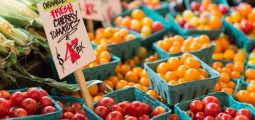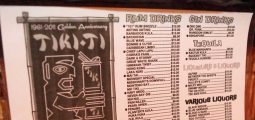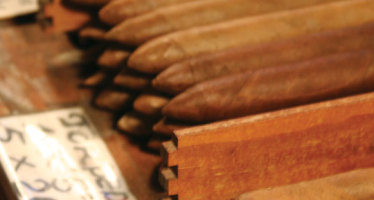Book Recommendation: Judgment of Paris: California vs. France and the Historic 1976 Paris Tasting that Revolutionized Wine by George M. Taber
The damage done by prohibition to American wine palates was more than substantial; it set the domestic wine industry back forty years, if not more. During “the noble experiment” that lasted between 1920 and 1933, Americans didn’t stop drinking wine, they just drank bad juice for a long time, long enough in fact that they started thinking it was good. Thus, the jug wine movement and its entire unfortunate offspring, such as white zinfandel, was born.
In the years that followed prohibition, many wineries struggled to make ends meet, manufacturing as much sweet swill as necessary to keep the doors open. However, on the side they were devoting themselves to the art of sculpting the sort of truly excellent wines that the Europeans, primarily the French, had never stopped making. It is little wonder that it came to be held as fact that American wine palates, like American whiskey palates and American cuisine, were lacking.
But those who did devote themselves to the art and craft of making truly excellent wine quickly found that, in the fertile climes of the Napa and Sonoma Valleys, they were able to do precisely that. There in the rich soils of northern California, ancient wineries such as Buena Vista, Chateau Montelen and Charles Krug were revitalized, while new wineries such as Stag’s Leap Wine Cellars were being born. At the helm of these operations were men like the visionary Robert Mondavi and the godfather of wine in California, a Russian immigrant by the name of Andre Tchelistcheff. There were others as well, such as the Serbian immigrant Mike Grgich, and the rogue poli-sci professor-turned-vintner from Chicago, Warren Winiarski. And it was in fact these two men, as much or more than anyone, who are responsible for putting the Napa Valley on a map larger than that of merely California.
Unbeknownst to one another, this duo, in addition to Tchelistcheff and a small cast of other important figures, are the focus of Judgment of Paris: California vs. France and the Historic 1976 Paris Tasting that Revolutionized Wine by George M. Taber, because they were the men who made the wine (vintners) that eventually won the now rather infamous blind tasting in Paris. In 1976, a Francophile Englishman living and running a wine operation in Paris by the name of Steven Spurrier hosted a blind tasting, pitting Napa Valley wines against some of the best French wines of the day. He personally selected both the wine and the judges, all of whom were French and of impressive credentials. Long story made short (spoiler alert), the highest rated white was a 1973 Chateau Montelena Chardonnay, and the best red was a 1973 Stag’s Leap Cabernet Sauvignon. The ’73 Montelena was made by Mike Grgich, and the ’73 Stag’s Leap by Warren Winniarski. Interestingly, though they beat out the likes of a Batard-Montrachet Ramonet-Prudhon 1973 (Chard) and of a Chateau Mouton Rothschild 1970 (Cab), both the Montelena and Stag’s Leap were in their first vintage.
As Judgment of Paris goes on to detail in enjoyable narrative fashion, the judges in Paris were greatly disturbed by the results. In truth, Spurrier never anticipated the upset, and it did nothing to endear him to his French colleagues in viticulture. Nevertheless, he maintained enough integrity not to allow the judges to “have their results back” as several were demanding, and did not impede in any way the publication of the results in Time Magazine.
The event was covered by George M. Taber, a correspondent for Time and the only journalist to take Spurrier up on the offer to attend. In around 300 pages, Taber crafts a narrative that will slake the academic thirst of even the most knowledgeable wine connoisseur, while remaining pleasantly accessible to the rest of us. His engaging, well-researched narrative is among the most important books about the American wine industry currently in print, as it details meticulously the event that thrust high quality American wine upon the international scene, and perhaps also forced a majority of Americans to step outside of their post-prohibition shells and try, well, drinking good wine for a change.
As many are undoubtedly aware, this story has also been turned into a movie called Bottle Shock. Bottle Shock is wildly entertaining, if only vaguely accurate. To put it another way, what the movie gets wrong is, well, close to everything. Alan Rickman made a fantastic Professor Snape, but he unfairly makes Steven Spurrier into a pretentious twerp. Further, the egregious omission of such important players as Grgich and Winiarski leaves viewers under the impression that only the ’73 Montelena won the tasting, and that the money behind the operation, rather than the winemaker, was the responsible party. Nevertheless, it’s an entertaining, light-hearted movie for wine lovers that, unlike Sideways, did not do direct damage to the wine industry and, for that, it’s probably okay if we all love it.
Whether you’re reading the book or watching the movie loosely-based upon actual events, recommended pairings include a Stag’s Leap Artemis Cabernet Sauvignon and a Chateau Montelena Chardonnay. While Stag’s Leap Wine Cellar’s estate-grown stuff, that which may be the most similar to the ’73 winner in Paris, is pricey and hard to find, Artemis is a reasonable facsimile (the 2012 got 90 points from Robert Parker) for around $50 a bottle at Corkscrew, Brix, and several other Omaha area locations.
The Chateau Montelena Chard, most commonly seen in wine shops around Omaha in a 2012 vintage right now, is said to be “consistent” by Robert Parker, and is undeniably an enjoyable wine. It, too, runs in the $50 range. It may be worth noting, however, that today’s Chateau Montelena is, according to the woman who served it to me in their tasting room when I visited there in 2013, un-oaked, and therefore clean and light; more of what you’d expect to find in the Chablis region of France, and lacking the oaken and buttery characteristics that California Chardonnay is best known for. Just as interesting is the fact that the 1973 vintage, as you’ll learn in Judgment of Paris, was oaked. With that in mind, you might do just as well to pick up a bottle of Grgich Hills Chardonnay, which has a nice oaky quality, is just as available, typically slightly less expensive, and probably just as similar as the ’73 vintage that made it famous to begin with.
The grand takeaway from all of this is twofold: First, that while French wines are certainly enjoyable and among the best in the world, world-class wines have been made in the United States for the past forty plus years, and some of the very best of them are available right here in Omaha, Nebraska. And second, while it remains true that the movie is never as good as the book, the proper pairing for either text or cinema is, of course, wine.

Mark Gudgel
Dr. Mark Gudgel is a wine writer and educator who holds credentials through the Wine & Spirit Education Trust (WSET) and is working towards becoming a Master of Wine. His interest in wine was sparked on his honeymoon to Napa and Sonoma. Gudgel and his wife, Sonja, have co-authored several articles as well as a book on the wineries of Nebraska, to be released in the spring of 2017. Gudgel is a regular contributor to Food & Spirits Magazine and American Winery Guide, as well as the blog he maintains with his wife, www.itheewine.com. Mark and Sonja live in Omaha with their children and their dog.
Related Articles
It’s Just Natural: Nebraska’s Craft Beer Breweries are on the Rise
This is part one in a two part series. With the explosion of craft beer and the dozens of new
Smoking 101
Last issue I wrote about some of the basics of cigar etiquette including cutting, lighting, ashing and extinguishing your cigar.
A Color-Code for the History of Wine
I’m sure that somebody somewhere has written a comprehensive book on the history of wine. Surely it must be one
1 comment
Write a commentOnly registered users can comment.














